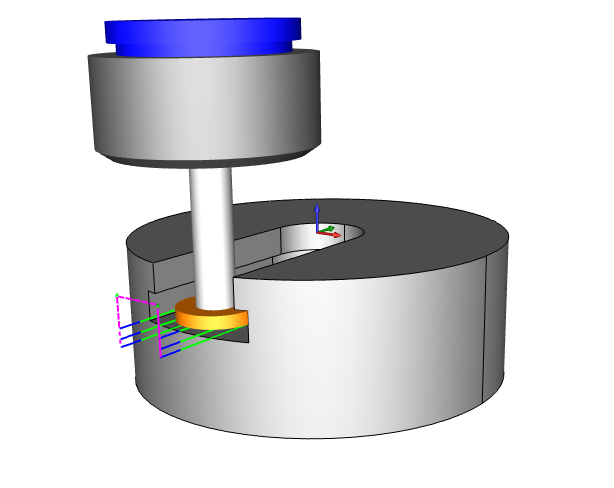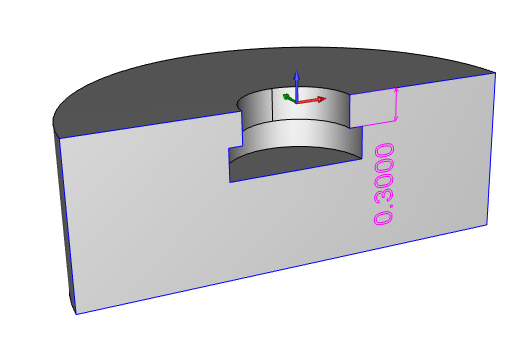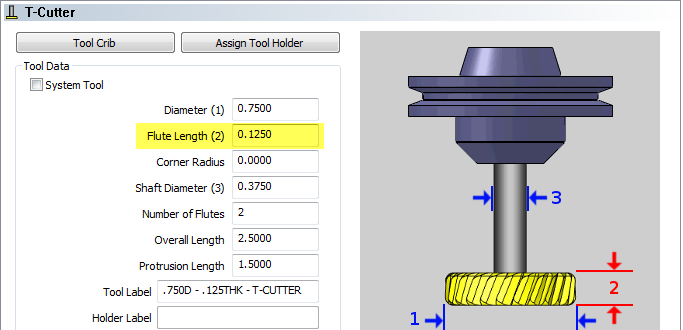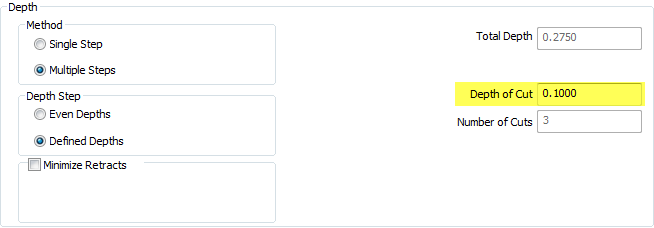Tech Tuesday is a weekly blog that addresses some of the most common questions and concerns that I hear throughout the previous week from users of BobCAD’s CNC software. Both customers and future customers are more than welcome to leave a comment on what they would like to see covered for the following Tech Tuesday.

Are you having difficulty entering the proper feature parameters and depth settings for your T cutters? In today’s Tech Tuesday we’ll break down the top of feature settings you’ll use to dial in your T cutter depth values ensuring you get the right depth value the first time, every time.

To start with, for this type of operation we will be using a profile feature. This operation allows you to select open or closed profiles that you want your tool to follow. When profiling you can choose from 7 tool types 1 of which is a T cutter.
Before you can properly set up your toolpath feature parameters you’ll need to know the exact T-cutter you’re using. This tool should be added to your tool library and properly setup.

When defining a T-cutter there are 3 values you’ll define.
- Diameter
- Flute Length
- Shaft Diameter
It’s important you set up these values correctly, this way when you backplot or simulation to check your work, you’ll know your tool will be simulated correctly.
Feature Parameters
Anytime you set up a profile feature you’ll need to define the “Top of Feature” and the “Total Depth”. These 2 values are used to control where the tool will start cutting from and how deep it will cut to.
In order to properly define the Top of Feature for our T cutter we need to know 3 things.
1- Start of Undercut

2- The Flute Length

3- The Depth of Cut

The Formula
Start of Undercut + Flute length – Depth of cut
In our example, our undercut profile starts .300 below Z zero. We are using a ¾ T-cutter with a .125 flute length and the depth of cut we want to use it .100
That’s .300 + .125 -.100 = .325
Based on our machine setup location being top center, our “Top of Feature” for this undercut is -.3250
Using this simple formula we can calculate the proper top of feature correctly every time. I recommend you give it a try on your next project.
To learn more about 2D Drilling with BobCAD, make sure to join the BobCAD After Dark Facebook group.
We host weekly live videos covering topics like this and much more.
BobCAD-CAM has provided CAD-CAM CNC Software products to the global manufacturing industry for over 30 years. BobCAD-CAM software can be found to increase CNC productivity for many applications in aerospace, automotive, production manufacturing, mold making, general machining, woodworking as well as the medical manufacturing industry, consumer products, musical instruments, custom fabrication, defense industry and many others due to the products ability to automatically generate NC programming code for such a wide variety of CNC controllers. BobCAD-CAM software is also found in educational institutions throughout the world as well as independent hobby home use. Products include machining technology for 2, 3, 4 & 5 Axis CNC Milling, Routing, Waterjet, Plasma and Laser machines as well as 2 Axis CNC Lathe. BobCAD-CAM is modular allowing shops to start off at a reduced technology level and add technology as it is needed including an add-on, BobART, for artistic machining. Unique technology includes adaptive high-speed machining multiaxis milling and routing which is a first in the world of CAD-CAM software. BobCAD-CAM also provides a variety of quality training products that include regional and online training classes or private sessions tailored to specific applications. Professional certification and multi-tiered support solutions are available. Contact BobCAD-CAM directly for more information at 877-262-2231 or 727-442-3554.




Leave a Reply